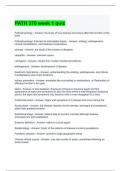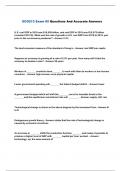Samenvatting
Summary Data Science for Business Book Chapters
- Instelling
- Universiteit Van Amsterdam (UvA)
A summary of the book "Data Science for Business" by Foster Provost and Tom Fawcett. These notes per chapter also have highlighted the information that was presented in the class slides as well in yellow, showing students the things that they should focus on based on what was discussed in the lectu...
[Meer zien]














